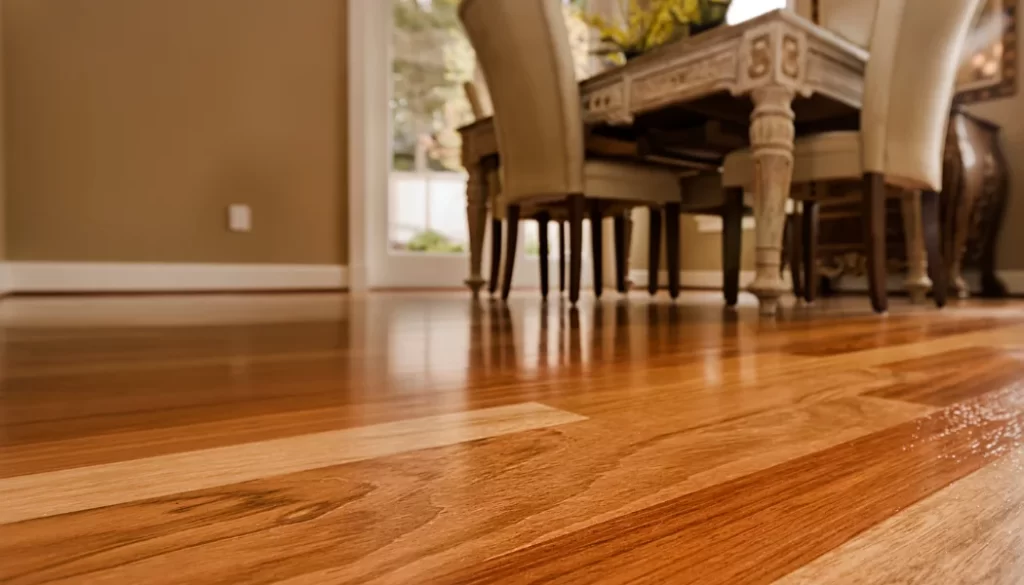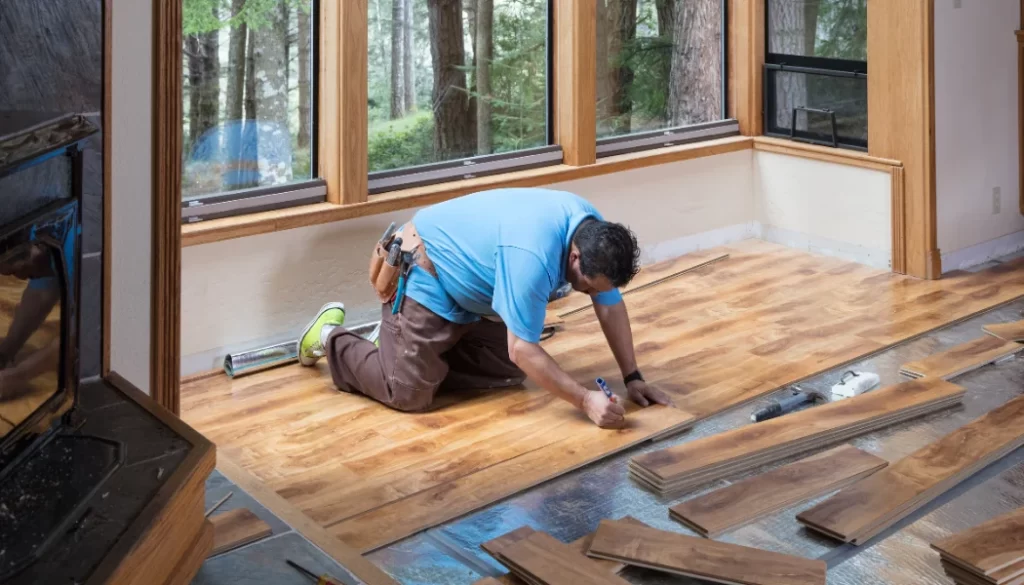Recent Posts

When it comes to choosing hardwood flooring for your home, one of the most crucial decisions you’ll face is whether to go with prefinished or unfinished hardwood. Both options have their own set of advantages and disadvantages, and the best choice for you will depend on various factors, including your budget, timeline, and the specific requirements of your space. This comprehensive analysis will help you understand the differences and make an informed decision.
Prefinished hardwood flooring has recently surged in popularity among homeowners, installers, and interior designers. As the name suggests, prefinished hardwood floors are pre-stained and coated with a protective polyurethane layer before installation. Each plank is fully finished before reaching the retail shelves. These boards, made of solid hardwood, are often treated with a highly durable, scratch-resistant lacquer. Prefinished flooring is available in a wide range of stain colors, finishes, and sizes, offering versatility to suit various design preferences.

Durability
Prefinished wood flooring is treated with multiple layers of an exceptionally durable finish known as aluminum-oxide-infused polyurethane, which is then cured under UV rays. This process results in a robust, scratch-resistant finish that enhances the longevity of the hardwood planks.
Safety
Since prefinished hardwood flooring is already stained and finished before installation, residents are not exposed to odors during the curing process. Many adhesives and coatings used in on-site finishing release volatile organic compounds (VOCs) that emit toxic fumes as they dry. Prefinished flooring eliminates this risk, ensuring a safer indoor environment.
Faster Installation
Prefinished hardwood flooring offers a significantly quicker and easier installation process since the boards come pre-stained and sealed. This convenience makes the installation DIY-friendly, allowing knowledgeable homeowners to tackle their own home remodeling projects with confidence.

Difficult to Sand and Refinish
Although prefinished hardwood floors are highly durable, they are not immune to damage. Repairing a single board can be challenging due to the tough finish. Additionally, if you want to renew the floor in the future, refinishing may be more difficult compared to unfinished hardwood.

Less Customizable
Despite the variety of options available, one drawback of prefinished hardwood flooring is limited customization. Choices may be restricted in terms of board width, length, grain patterns, and sealant shine levels, which might not cater to specific design preferences.
For decades, the traditional method of installing hardwood floors involved finishing the wood on-site. This process entails installing the raw wood flooring first, then sanding it, and finally applying the stain and sealer.
No Beveled Edges
Prefinished boards typically have seams or beveled edges due to their manufacturing process. In contrast, site-finished hardwood floors are sanded during installation, eliminating any beveled edges and creating a seamless, uniform surface.
Several Customization Options
Unfinished hardwood floors offer endless customization possibilities, serving as a blank canvas for homeowners to bring their vision to life. Installers can incorporate bespoke elements such as inlays, medallions, and borders, adding unique character and personalization to the flooring.
Easier Refinishing in the Future
Refinishing hardwood floors is considerably easier with unfinished hardwood flooring compared to prefinished options. While solid wood floors can last for years, if the need arises to refresh their appearance, site-finished hardwood floors are much easier to refinish, offering greater flexibility and convenience.
Installation Can Be Time-Consuming
One of the major drawbacks of opting for a site-finished hardwood floor is the time-intensive installation process. After the solid hardwood is installed, several additional steps are necessary, including sanding and staining. Furthermore, there’s a waiting period for the floor to cure, during which the homeowner must exercise caution to prevent damage.

Consider your priorities, budget, and space’s specific requirements to make the best choice for your home. With the right decision, you’ll enjoy the timeless beauty and warmth of hardwood flooring for years to come.
Visitors welcome by appointment only.
Copyright © 2025 Old World Timber. All Rights Reserved.